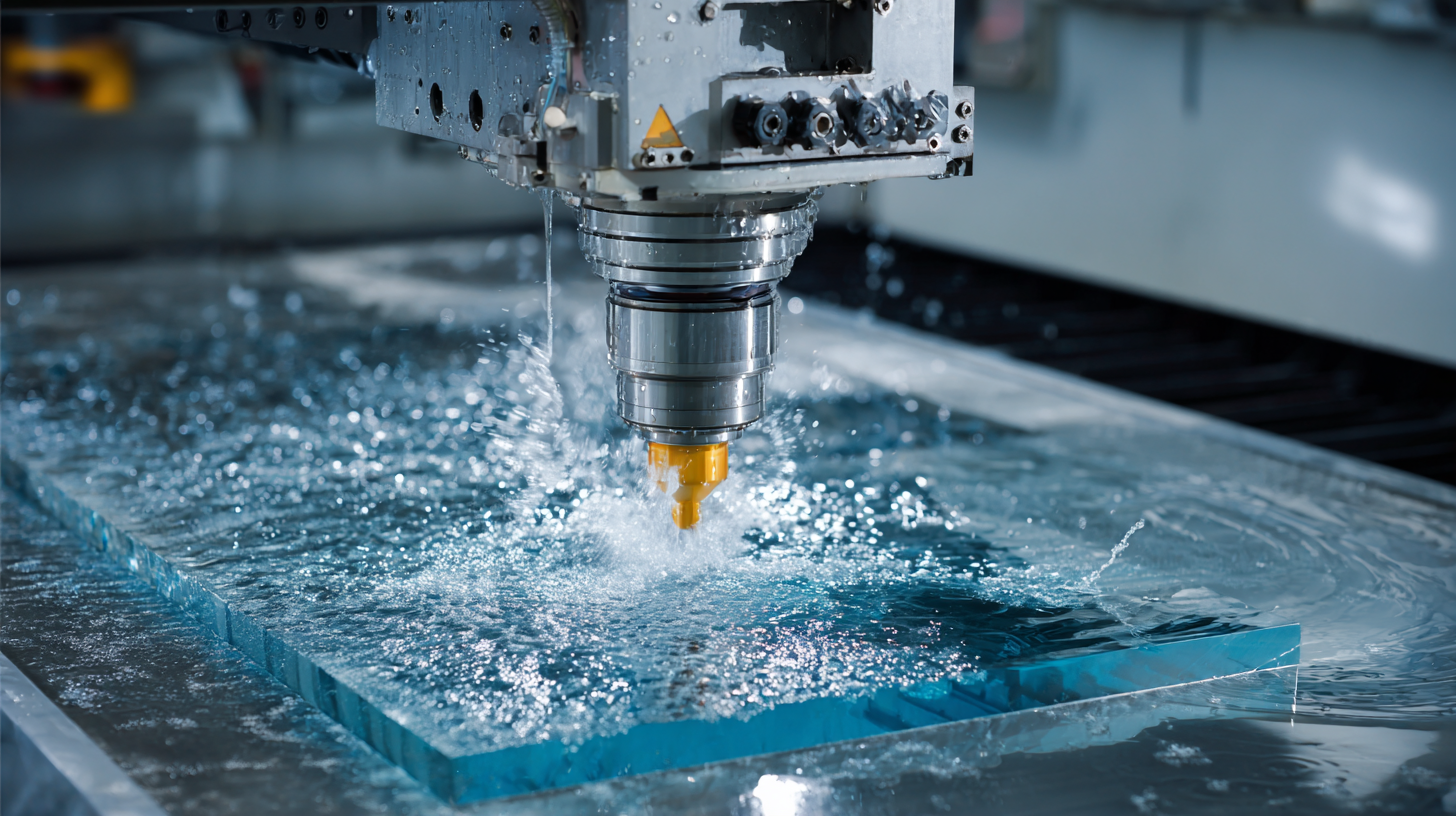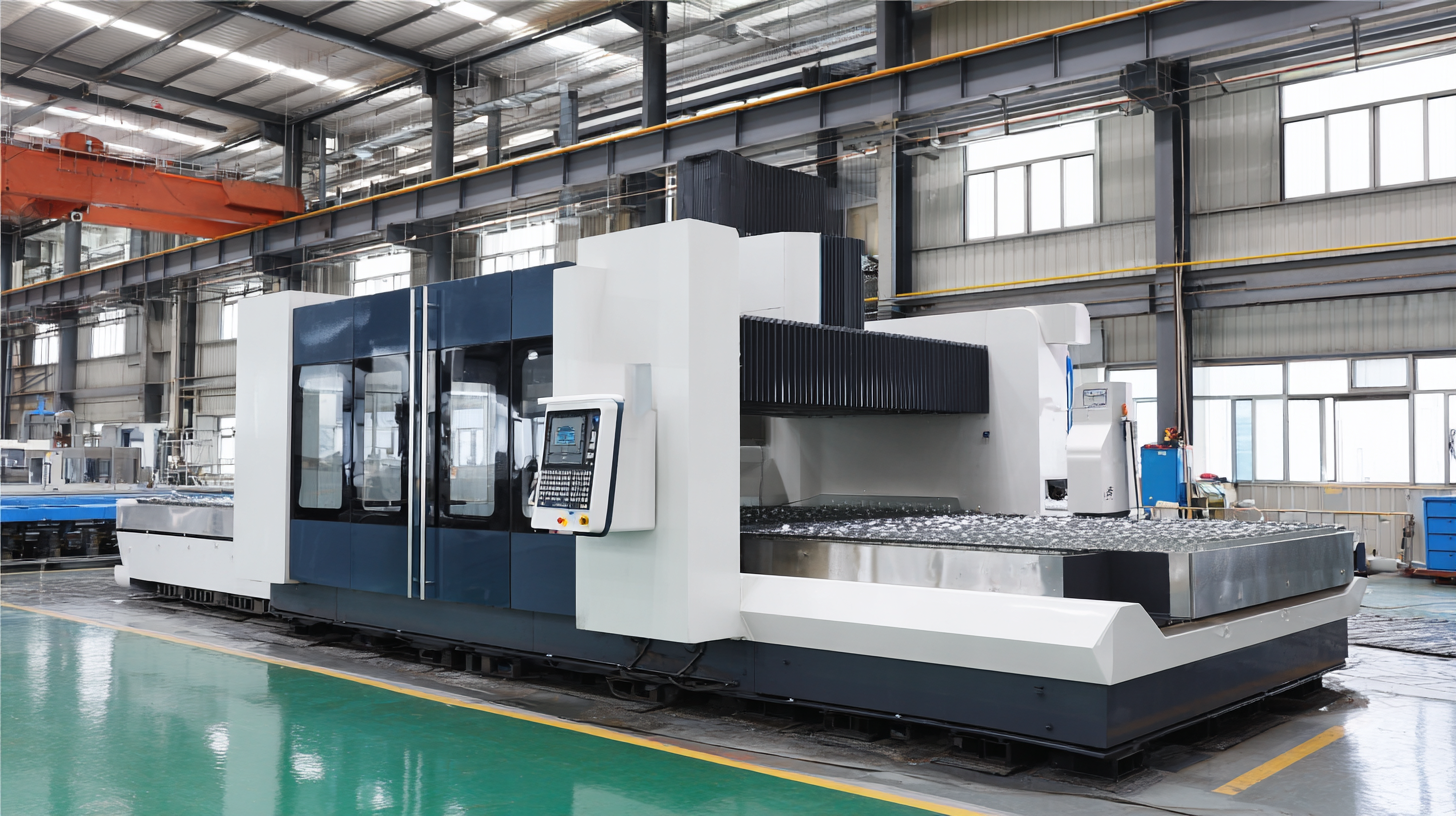Top 5 Best CNC Machines for Glass Processing: Unveiling Technical Specs and Performance Metrics
The demand for precision and efficiency in the manufacturing sector has driven remarkable advancements in CNC machine glass processing technology. According to a recent industry report by Research and Markets, the global CNC machine market is projected to reach over $100 billion by 2026, with glass processing applications playing a pivotal role in this growth. The ability to produce complex shapes and high-quality finishes with minimal human intervention has made CNC machines indispensable in glass fabrication. In this blog, we will explore the top five CNC machines specifically designed for glass processing, delving into their detailed technical specifications and performance metrics. By understanding the capabilities of these machines, businesses can make informed decisions that enhance productivity and maintain competitive advantage in a rapidly evolving market.
Top Features to Look for in CNC Machines for Glass Processing
When selecting CNC machines for glass processing, certain features are crucial to achieving precision and efficiency. One of the top features to consider is the machine's spindle speed. High spindle speeds enable smoother cutting and engraving in glasswork, reducing the chance of chipping or cracking. Additionally, a machine with variable spindle speed allows operators to adjust the speed according to the thickness and type of glass being processed, ensuring optimal results.
Another key aspect to look for is the ability to handle intricate designs. A CNC machine equipped with advanced software and a robust control system can execute complex patterns and designs with ease. Compatibility with design programs like CAD and CAM enhances the versatility of the machine, allowing for seamless integration into existing workflows. Furthermore, features like multi-axis capabilities enable the creation of three-dimensional glass objects, expanding the possibilities for artistic and functional applications. Investing in a CNC machine that showcases these features will elevate the quality of glass processing and provide a competitive edge in the market.
Top 5 CNC Machines for Glass Processing
High Precision vs. Speed: Finding the Ideal Balance in Glass CNC Machines
 When selecting the best CNC machines for glass processing, the balancing act between high precision and speed is crucial. High precision ensures that intricate designs are executed flawlessly, resulting in aesthetically pleasing and functional glass applications. However, achieving this level of accuracy often requires slower machining speeds, which can decrease overall productivity. Therefore, finding a CNC machine that offers adjustable speeds without compromising on precision is key for manufacturers seeking efficiency without sacrificing quality.
When selecting the best CNC machines for glass processing, the balancing act between high precision and speed is crucial. High precision ensures that intricate designs are executed flawlessly, resulting in aesthetically pleasing and functional glass applications. However, achieving this level of accuracy often requires slower machining speeds, which can decrease overall productivity. Therefore, finding a CNC machine that offers adjustable speeds without compromising on precision is key for manufacturers seeking efficiency without sacrificing quality.
One tip for optimizing performance is to look for machines featuring advanced spindle technology. These spindles can operate at varying speeds, allowing operators to adjust based on the material and complexity of the task at hand. Additionally, investing in a CNC machine with a robust cooling system can help maintain precision during high-speed operations, reducing the risk of thermal distortion and ensuring consistent results.
Another consideration is the software capabilities of the CNC machine. A user-friendly interface with advanced path optimization algorithms can significantly enhance machine performance, enabling operators to find the right balance between speed and quality. This ensures not only rapid production but also high-quality finishes, making it easier to meet tight deadlines while maintaining impeccable craftsmanship in glass processing.
Comparative Analysis of Technical Specs for Leading Glass CNC Models
When selecting the best CNC machines for glass processing, a comparative analysis of technical specifications reveals key insights that can influence purchasing decisions. According to a recent industry report published by IBISWorld, the global CNC machine market is projected to grow at a CAGR of 6.5%, driven by advancements in precision and automation. This growth underscores the importance of understanding the specific capabilities of various models. For example, machines like the Biesse Rover and the Homag BMG 300 offer impressive cutting speeds of up to 50 m/min, making them suitable for high-volume production environments.

In terms of versatility, machines such as the CNC Glass Router 1325 excel with their multi-functionality, handling complex shapes and various thicknesses of glass. Industry data indicates that models equipped with advanced software solutions can reduce programming time by 30%, significantly enhancing productivity. Furthermore, the integration of waterjet technology in machines like the OMAX 55100 allows for smoother edges and less material wastage, which is crucial in a sector where precision is paramount. As companies prioritize efficiency and quality, comparing these technical specifications becomes essential for industry professionals aiming to invest in the most suitable glass processing solutions.
Performance Metrics: Evaluating Efficiency and Output in Glass Processing
When selecting a CNC machine for glass processing, performance metrics play a crucial role in evaluating its efficiency and output. Key indicators such as spindle speed, feed rates, and precision levels must be considered to ensure optimal results. High spindle speeds not only enhance cutting efficiency but also minimize overheating, which can damage delicate glass materials. Simultaneously, the feed rate should be carefully calibrated to balance speed and quality, preventing chipping or cracking during the cutting process.
Another critical aspect of performance metrics is the machine's ability to handle various glass types and thicknesses. Machines designed with adjustable settings enable operators to tailor the process according to specific project requirements, enhancing versatility in glass processing tasks. Additionally, software integration for real-time monitoring can provide insights into operational efficiency, allowing for adjustments that maximize output without compromising the quality of the finished product. This combination of technical specifications and performance capabilities ensures that the selected CNC machine not only meets but exceeds the demands of modern glass manufacturing.
Top 5 Best CNC Machines for Glass Processing
| Model |
Max Cutting Speed (mm/min) |
Accuracy (mm) |
Spindle Power (kW) |
Control System |
Price Range (USD) |
| CNC-1 |
1200 |
0.02 |
5.5 |
Step/Servo |
$15,000 - $20,000 |
| CNC-2 |
1500 |
0.015 |
7.5 |
Servo |
$20,000 - $25,000 |
| CNC-3 |
1000 |
0.03 |
4.0 |
Step |
$10,000 - $15,000 |
| CNC-4 |
1800 |
0.01 |
8.0 |
Servo |
$25,000 - $30,000 |
| CNC-5 |
1600 |
0.025 |
6.0 |
Step/Servo |
$18,000 - $22,000 |
Case Studies: Success Stories of Glass Processing with CNC Technology
CNC technology has revolutionized the glass processing industry, enabling precision work that was previously unattainable.
One compelling case study involves a boutique glass design company that adopted a state-of-the-art CNC machine for their intricate glass designs.
By integrating CNC technology into their workflow, they were able to significantly reduce production time while enhancing the quality of their finished products.
The machine's ability to execute complex patterns with exacting detail not only impressed clients but also positioned the company as a leader in the market.
Another remarkable success story comes from a large-scale glass manufacturer that sought to streamline its production process.
After investing in high-performance CNC machines, they reported a remarkable increase in output levels.
The advanced technical specifications of their new CNC systems allowed for simultaneous processing of multiple glass panels, further optimizing efficiency.
This transformation not only met rising demand but also improved the company’s bottom line, showcasing the profound impact that CNC technology can have on glass processing industries.

Home
About Us
Products
UPVC PVC Window Machine
Aluminum Window Machine
Glass Cutting Machine
Glass Edging Machine
Insulating Glass Machine
Glass lifting machine
Glass Washing Machine
Glass Laminating Machine
Glass Sandblasting Machine
Glass Drilling Machine
CNC Glass Working Center
CNC Non-Metal Cutting Machine
The Other Glass Machinery
Application
Download
News
Contact Us

 When selecting the best CNC machines for
When selecting the best CNC machines for 